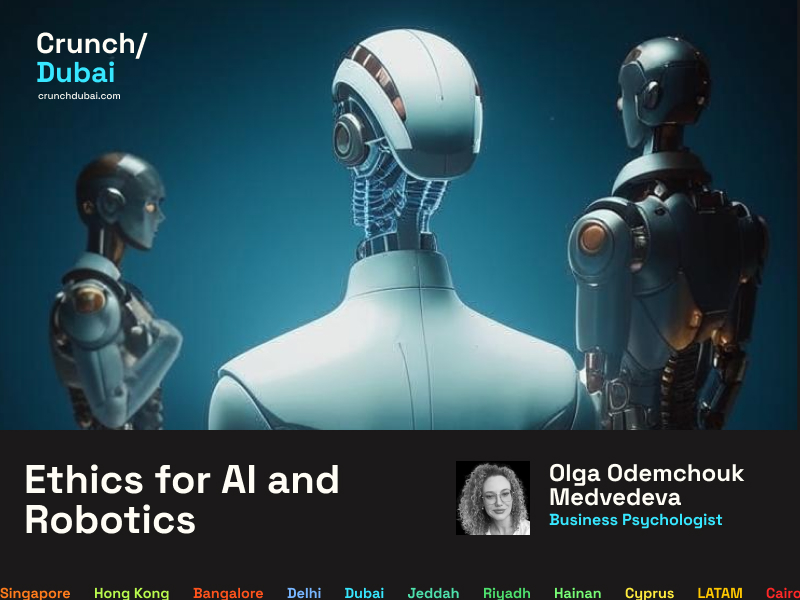The development of artificial intelligence (AI) and robotics poses a number of ethical challenges, which need to be addressed to ensure responsible and beneficial use of these technologies.
Ethical Standard
Ethical Standard = Fairness + Safety + Accountability
The ethical frameworks for AI and robotics emphasize the need to prioritize human values, rights, and wellbeing throughout the entire lifecycle of these technologies.
That’s a great challenge because AI systems can inherit biases from their human creators.
Anyway ongoing collaboration between technologists, policymakers, and the public is having its effect and according to the latest study AI outperforms humans in moral judgement.
In the study, participants evaluated responses to ethical questions from both AI and humans anonymously, consistently favoring the AI-generated answers over those from humans in terms of moral integrity, intelligence, and reliability.
We can indeed build the foundation for an ethical system standard by grounding and focusing on accurate and relevant social data. These data, as their specifics suggest, should certainly be trusted to experts in the social sciences, like business psychologists.
Employment and Income Inequality
Various researches forecast unemployment and increased wealth gaps as a result of automation, but some estimates may be excessive.
The relationship between AI, automation, jobs, inequality and productivity growth is complex with varying predictions on the amount of job losses and wage impacts.
Policy interventions are necessary to mitigate negative effects and ensure an equitable distribution of income.
Industries Most Vulnerable to Job Loss Due to AI and Robotics Development
- Manufacturing, finance, media, health care and customer service all have repetitive or automatable tasks meaning they are most at risk of job loss due to AI and robotics.
- – Manufacturing could face alterations including replacing human labor force with robots whose processes will be optimized by artificial intelligence (AI).
- – Customer service as well as data entry positions are vulnerable to automation through artificial intelligence powered chatbots hence affecting primarily first-time jobs opportunities.
- – Media and marketing can also face a situation where AI-generated content replaces some jobs, particularly entry level posts.
- – For instance, in the finance sector, integration of AI for roles like data entry may result in job cuts especially in low-skilled positions.
- – Health care – it is unlikely that AI will replace workers in healthcare since it requires emotional intelligence to appropriately handle patients. AI has the capability to automate administrative duties like data entry and paperwork.
Privacy
Privacy of the user is a major issue as AI-driven robotic systems become more cognitive, giving rise to concerns about security and ethics as far as privacy, integrity, and safety are concerned.
The gathering and retention of personal data through such machines raises serious questions on privacy necessitating compliance with laws like CCPA and GDPR that prevent data breaches or misuse.
There are a number of key strategies for dealing with AI and robotics privacy issues:
- Addressing biases in AI models.
- Data cleaning, anonymization, and minimization.
- Encrypted storage, transparency and accountability in relation to data handling.
- Security audits, following privacy laws, secure communication protocols utilization.
- Explainable AI systems development, collaboration among stakeholders.
In general these measures have got the intention of ensuring that people’s personal information is safeguarded while also making sure that there is compliance with the rules governing privacy within the context of artificial intelligence and robot development.
Historical Experience
From a historical innovation perspective, we can compare the emergence of artificial intelligence (AI) and robotics to the development of the Industrial Revolution and the automation of production.
Just as industrial automation changed production processes and labor relations, the introduction of AI and robots into modern society is leading to shifts in jobs, production processes, and socio-economic structures.
These innovations are accompanied by changes in required skills, work organization, and affect the distribution of the workforce, similar to how the Industrial Revolution affected traditional industries and occupations.
Psychological Dimension
The creation of human-like android robots raises profound questions in the context of philosophical, social, and legal considerations.
The co-evolution of humans and AI/robots requires mutual adaptation and reflection on the changing nature of human relationships and identities.
The positive-negative-competence (PNC) model outlines the key psychological processes that people experience in response to robots, categorizing them into positive, negative, and competence-related dimensions. This model highlights the importance of individual differences in predicting these psychological reactions.
The fear of robots and AI is not solely based on Hollywood’s portrayal, other popular media and science fiction of evil machines but on concerns that these technologies may excel in ways we do not desire, surpassing human intelligence and autonomy.
Research indicates that understanding the psychological variables, such as self-perceived stress, plays a crucial role in shaping individuals’ fear of autonomous robots and artificial intelligence.
Moreover, the intersection of neuroscience and AI highlights how fears related to AI, like loss of control, privacy, and human value, are deeply rooted in our neural responses to uncertainty and potential threats, intensifying fears about AI’s development.
Fear Management
- Firstly, demystification and education are crucial to dispel misconceptions and explain the capabilities and limitations of AI and robotics. This involves gradual implementation with clear communication and employee involvement to ease the transition and address fears of job displacement.
- Additionally, AI should be positioned as a tool to enhance human capabilities rather than replace them, shifting perceptions and reducing fears.
- To further mitigate fears, psychological factors such as self-perceived stress should be understood and addressed through training and mental health support.
- Encouraging continuous learning and skill development also empowers employees to adapt to technological changes and feel less threatened.
- Finally, transparency and open communication are essential to foster trust and reduce fears by being open about AI’s impact and involving employees in decision-making processes.
